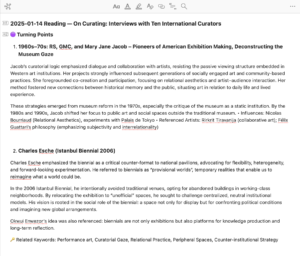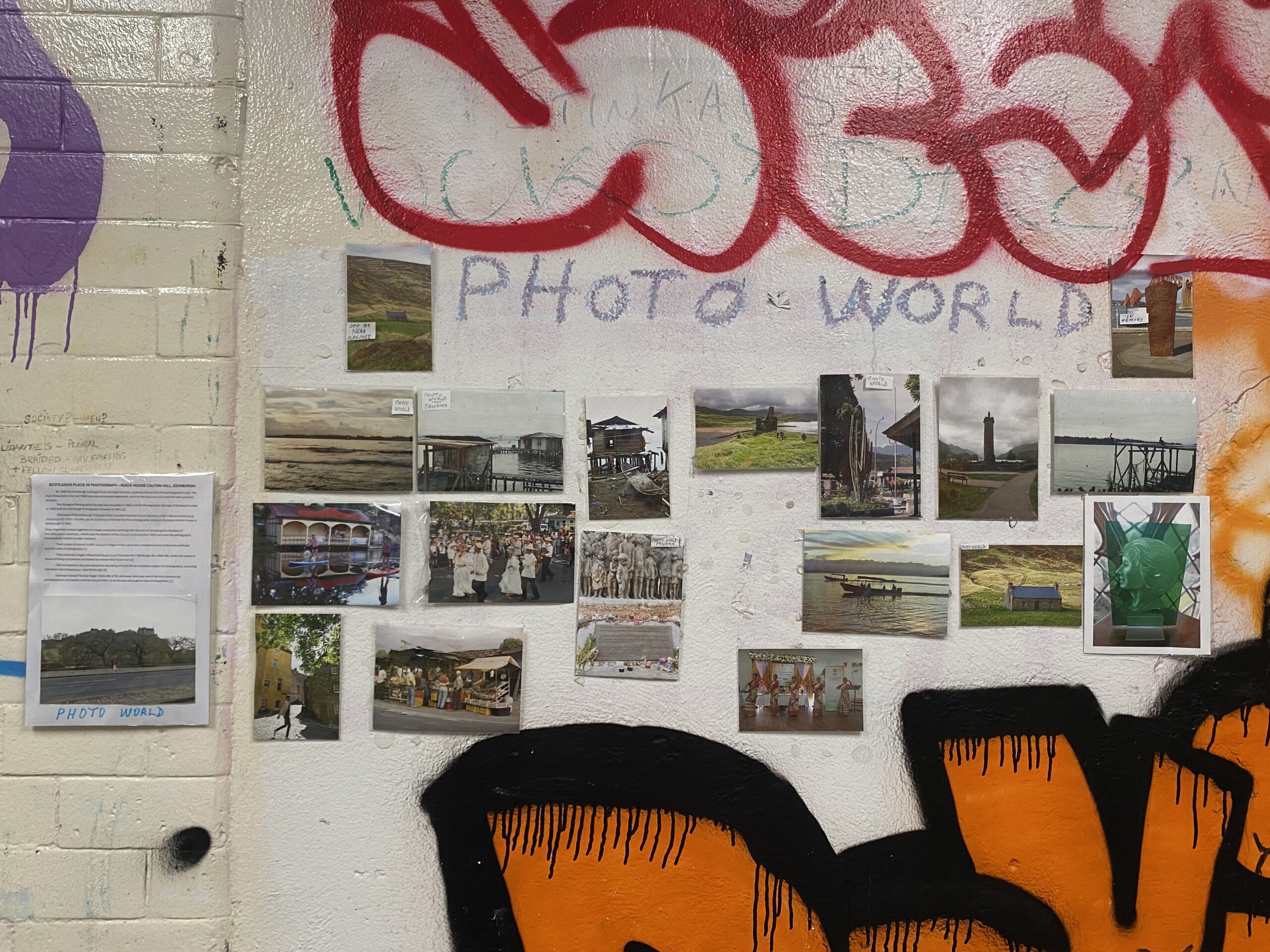Say hi to curating: Thinking through disorder
Starting this curating course feels like stepping into a new chapter, full of curiosity and possibilities. 📖✨ It’s exciting to think about exploring curatorial ideas, experimenting with new methods, and letting creativity take the lead. While the journey might feel challenging at times, I’m ready to embrace it all and see where it takes me. Here’s to a fulfilling start! 🌱🎨
🔝Week’s Focus
This week’s class focused on different curatorial models, particularly the practices of Small Visual Arts Organisations (SVAOs), to explore how contemporary curating is shifting away from centralised, institutional frameworks. This shift not only involves spatial strategies (e.g., marginal zones, urban interstices), but also emphasises local communities, low-tech production, and collaborative processes.
Key questions explored in class included:
- Does curating need to be institutionally based, or can it exist as a guerrilla practice?
- How does ‘place’ deeply affect both the content and form of curatorial practices?
- Can curating serve as a research method, even as a form of Participatory Action Research?
📖Readings & Inspirations

Figure1: Yiran Gu. 2025-01-14 Reading — On Curating: Interviews with Ten International Curators. Reading notes, January 14, 2025.
-
Ana Bilbao — Micro-Curating: The Role of SVAOs in the History of Exhibition-Making
This text critiques dominant curatorial historiography that overemphasises the role of the curator-as-author, blockbuster exhibitions, and quantifiable metrics. Bilbao argues that SVAOs have contributed significantly to curatorial practice worldwide through:
- Emphasising process over product;
- Prioritising local engagement and research;
- Fostering sustainability through smallness and networking.
Keywords: Collectivity, Process-based curating, Glocality, Slow-time collaboration
-
On Curating: Interviews with Ten International Curators — Introduction
This introductory essay outlines tensions within contemporary curatorial work, especially the balance between institutional demands (funding, visibility) and personal values. Curating is presented as a constant negotiation between site, object, context, and economy. Some curators also stress ‘tactical marginality’ — deliberately positioning themselves outside dominant systems to maintain autonomy.
Keywords: Negotiation, Institutional critique, Tactical marginality, Ethical responsibility
-
Ronald Kolb et al. — Centres / Peripheries – Complex Constellations
This essay challenges the centre/periphery binary that persists in global curatorial discourse. While decentralisation is often claimed, many Southern curatorial practices are still evaluated by Northern frameworks. The authors suggest replacing binary terms with a ‘constellation’ model, encouraging local epistemologies and observing power asymmetries critically.
Keywords: Constellation, Power asymmetry, Local epistemology, Curatorial cartography
❓Questions Raised This Week
- When curating is assigned a ‘social mission’, how can curators balance action and reflection?
- Can SVAOs’ ‘de-institutional’ models remain sustainable or risk being reabsorbed by the system?
- Is it possible to imagine a truly non-centralised mode of curatorial writing—one that begins from place rather than curators or institutions?
Broken Globolazation & Contemporary Curating © 2025 by Yiran Gu is licensed under CC BY-NC-ND 4.0



Leave a Reply